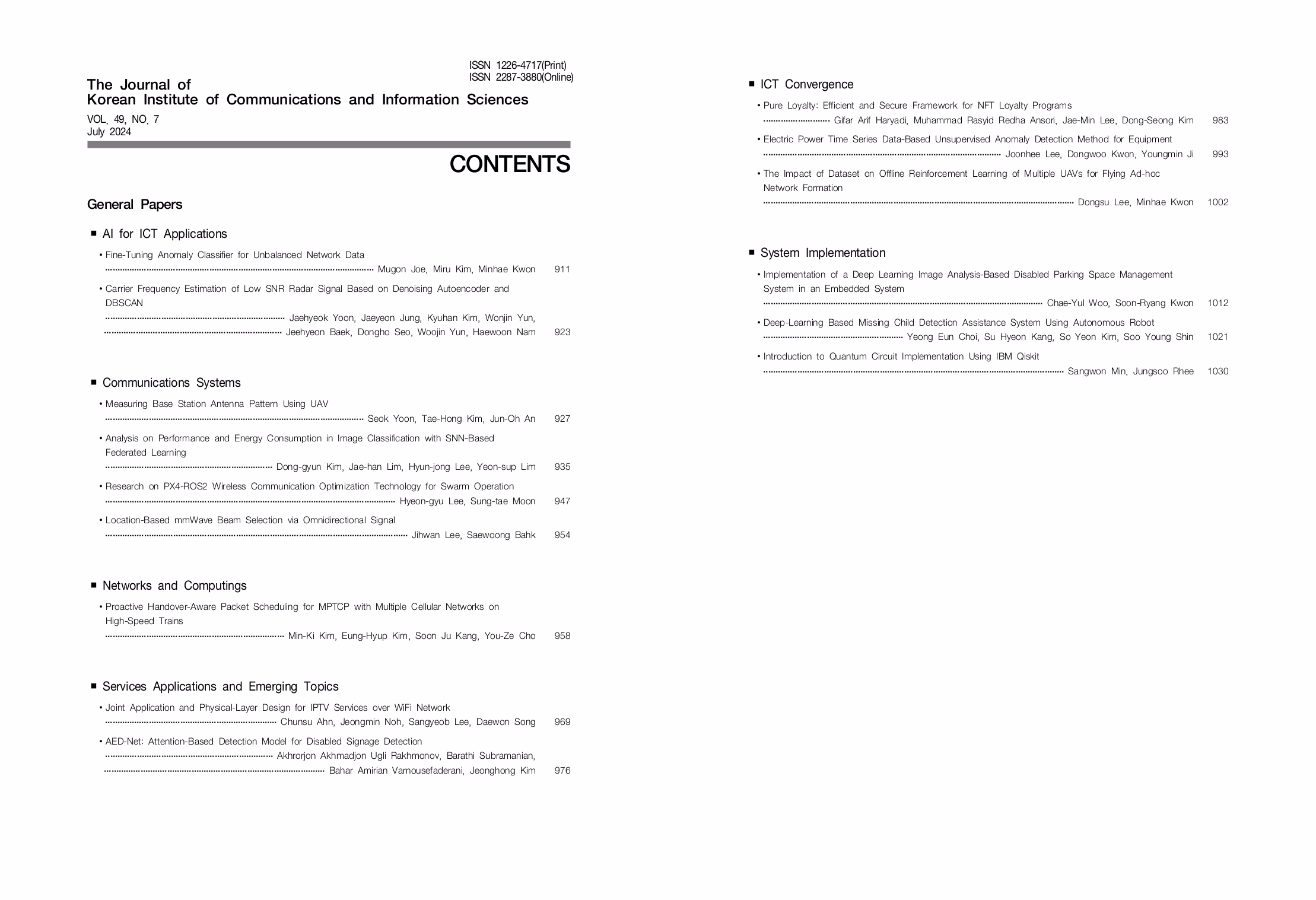Location-Based mmWave Beam Selection via Omnidirectional Signal
Vol. 49, No. 7, pp. 954-957, Jul. 2024
 10.7840/kics.2024.49.7.954
10.7840/kics.2024.49.7.954
PDF Full-Text
Abstract
Statistics
Cumulative Counts from November, 2022
Multiple requests among the same browser session are counted as one view. If you mouse over a chart, the values of data points will be shown.
Multiple requests among the same browser session are counted as one view. If you mouse over a chart, the values of data points will be shown.
|
|
Cite this article
[IEEE Style]
J. Lee and S. Bahk, "Location-Based mmWave Beam Selection via Omnidirectional Signal," The Journal of Korean Institute of Communications and Information Sciences, vol. 49, no. 7, pp. 954-957, 2024. DOI: 10.7840/kics.2024.49.7.954.
[ACM Style]
Jihwan Lee and Saewoong Bahk. 2024. Location-Based mmWave Beam Selection via Omnidirectional Signal. The Journal of Korean Institute of Communications and Information Sciences, 49, 7, (2024), 954-957. DOI: 10.7840/kics.2024.49.7.954.
[KICS Style]
Jihwan Lee and Saewoong Bahk, "Location-Based mmWave Beam Selection via Omnidirectional Signal," The Journal of Korean Institute of Communications and Information Sciences, vol. 49, no. 7, pp. 954-957, 7. 2024. (https://doi.org/10.7840/kics.2024.49.7.954)
Vol. 49, No. 7 Index



